- Home
- Eric Flint
1636- the China Venture Page 35
1636- the China Venture Read online
Page 35
Colonel von Siegroth and his assistants gave their attention, prudently, to the pyrotechnical equipment, but Judith Leyster, her role done, counted the crowd. “I think we must have a thousand people here.”
“A thousand?” Liu Rushi laughed. “Perhaps twice that.”
As Mike Song and Liu Rushi waited for the fireworks to begin, she sang a song. Not surprisingly, given the singer’s background, it was risqué. The dialect was not one spoken much in Taiwan but Mike could figure out that it was about how a lover, presumably male, being like fireworks. Something about him penetrating the heavens—snort!—and then faithlessly disappearing with a flash, leaving just smoke (memories?) behind.
Mike laughed. “Haven’t heard that one before. What sort of song is that? And what dialect were you singing it in?”
“It’s a ‘mountain’ song, in the Wu dialect of Suzhou. My friend Feng Menglong has been collecting them; he hopes to publish a collection one day.”
* * *
Unlike the two happy lovers, Colonel von Siegroth was sweating bullets. The fireworks display had to be impressive, to persuade the minister’s colleagues to buy SEAC’s ordnance. But every burst carried the risk, however small, of going awry in some way, whether that be a dud or, worse, causing injury to persons or property. Before leaving Europe, von Siegroth had read whatever he could about the interactions between China and Europe, and he had learned of an incident in 1784 in which two Chinese officials died of wounds accidentally inflicted by a salute from the guns of the Lady Hughes. The Chinese insisted that the English turn over the gunner, the English refused, and the Chinese imposed a total trade boycott on the English. The English capitulated, and the gunner was tried, found guilty of murder, and executed by strangulation.
The colonel found himself feeling his own neck, and dropped his hand hastily.
* * *
While the set pieces would show the key scenes of the story, Colonel von Siegroth and his friends couldn’t base the performance on set pieces alone. There just wasn’t time, and, in any event, aerial fireworks had their own advantages.
There were two choices for delivery of aerial fireworks: rockets and shells. Von Siegroth’s preference was for shells; since they didn’t have to propel themselves, they could carry a larger payload. Besides, it was obvious from the fireworks display von Siegroth had seen in Fujian that the Chinese knew more about rockets than he did. Play to your strengths, von Siegroth had told himself.
Shells had to be launched into the air by a mortar. The pellets—“stars”—which were placed in the shell to produce the colored aerial explosions had been made before the Rode Draak left Europe. Von Siegroth could make more, if need be—the process was similar to that of making black powder, except that the coloring agent was included in the recipe—but it was not without danger. Von Siegroth had hoped that he could just sell the coloring agents and leave it up to the Chinese pyrotechnicians to incorporate it into their own stars. After the surprise request from the Nanjing minister of war, he had the local specialists make stars for him using his coloring matter and specifications. At least, there were local specialists he could call upon; that was the advantage of being in a major city. Naturally, he had tested the product, and it had worked as expected.
The colonel had mortars, of course, and two were set up on the east shore of the lake. One of his gunners was stationed there, and had been given a two-way radio; von Siegroth held the other member of the pair. And he had a second pair to communicate with the leader of the set-piece crew.
Von Siegroth spoke into the walkie-talkie. “Testing, Testing, Testing. This is Central, do you copy, over.” He listened for the reply.
“Hello, Central, this is Mortars. You are loud and clear. How am I? Over.”
“I read you fine, Mortars. Hold for further instructions.” Von Siegroth then went through a similar communications check with “Set Pieces.”
The sun sank below the horizon, and the sky darkened.
Von Siegroth picked up a megaphone. “Mike, Mike, Mike, get the music going,” he said in English. The audience ignored this, of course, but Mike motioned to Liu Rushi and she to the lead musician. There was a roll of drums.…
“Hello, Mortars, begin firing the first series. Over.”
“Roger that, Central. Over.”
The mortars would be firing toward the west, away from the city of Nanjing. The lake was about four hundred yards from east to west so there was a good-sized area downrange that was free of houses and people.
Perhaps a minute later, the first shell screamed into the sky, and burst with a loud report. This first burst was red, the second white, and the third blue.
The Chinese, of course, were masters of aerial fireworks. But von Siegroth hoped to surprise them in the matter of colors. In Europe, before the Ring of Fire, the only choices were amber and off-white. The amber came from charcoal or iron filings, and the off-white from high-sulfur gunpowder.
Thanks to the special place of the Fourth of July in the hearts of Grantville residents, experimentation with fireworks had occurred fairly soon after the Ring of Fire. Mostly, this had involved adding to gunpowder those salts that would produce interesting colors—red and blue in particular. The geologists of Grantville were familiar with the colors produced by various elements because of the flame and bead tests used in mineral identification. Also, the encyclopedias provided a bit of additional information.
Red and blue had both been tricky, each in their own ways. The 1633 Fourth of July fireworks had used calcium, from the calcium carbonate of chalk, eggshells or seashells, as its red. But calcium’s flame was too orange-y for American tastes.
The best red was from strontium salts. Strontianite was available, according to the 1911 encyclopedia, from lead mines in Braunsdorf near Freiburg in Saxony, and from the marls of Munster and Hamm in Westphalia, but it wasn’t in any Grantville mineral collection, and thus had been provided to von Siegroth only just before the Rode Draak departed.
Blue came from copper salts, several of which had long been known to the alchemists. The “resin of copper,” copper chloride, was first synthesized in the old time line by Robert Boyle in 1664. It was easy enough to make from copper and corrosive sublimate, as Boyle had demonstrated, or by other methods.
In theory, the chloride was best, as it wouldn’t alter the oxygen balance of the gunpowder composition. However, copper chloride was hygroscopic, that is, it absorbed water. And damp gunpowder didn’t work well, either. Moreover, even when prepared fresh, the “blue stars” seemed to be finicky, being sometimes dim, or burning out quickly. Still, some blue was better than none.
After the first three bursts, there was a pause, and then some more conventional amber rounds.
Von Siegroth picked up the second walkie-talkie. “Set Pieces, give me the ship, over.”
“Ship coming up, over.”
The script had gone through several revisions. Most notably, Fang Yizhi and Xu Xiake had persuaded the admiral that it would be gauche at best and politically dangerous at worst to make the story be explicitly about him and the current situation. Likewise, they persuaded Eric and Mike that they, too, needed to be cautious.
So, instead, the story was set in the time of the Han dynasty, in which a valiant Chinese admiral, who just happened to be surnamed “Zheng,” led his men to a naval victory over pirates—represented by the mock naval battle on the lake at sundown. Soon thereafter, by the Will of Heaven, a delegation of wise men came from the Roman Empire, far to the west.
That was, of course, a veiled reference to the USE ship. The first set piece, placed on audience right since Chinese was read from right to left, depicted a ship of seventeenth-century western design, plowing through the waves. When Mike had protested the anachronism, back in the planning stage, Fang Yizhi had laughed and told him that no one in the audience would know or care what a Roman ship looked like.
Mike, now in the audience, had to admit that Colonel von Siegroth and Judith Leyster had done
a stunning job. The waves went up and down, and the sails puffed out and relaxed, as if responding to gusts of wind.
Jacob Huber, sitting next to him, whispered, “How did they do that?”
“The waves? There’s a short frame in front of the tall one. It has wavy lancework visible on both sides, and it’s on an axle, so it can be rotated.”
The glare from the lancework made it difficult to see anything else, but Jacob, now knowing what to look for, could just make out men in black on either side of the short frame, turning a large crank.
“As for the sails, they are short lance pieces on a stretchable cloth banner fixed at its ends, top and bottom, but free to move at its middle. The middles of the banners are attached to a cable, which runs to a pulley on the side of the frame. There’s another mechanism so assistants hidden behind the frame can pull down on a rope, which is translated into sideways movement of the cable. When the cable is pulled, the ‘sail’ seems to puff out, and when the cable is relaxed, the sail relaxes to a vertical line.”
“Why doesn’t the sailcloth burn?”
“It is treated with alum,” Mike explained.
“Why is part of the main frame dark?”
“You’ll see.”
* * *
Von Siegroth was pleased with the result of the first set piece. However, he could not be complacent; the Chinese had their own, he knew. In Hangzhou he had seen pyrotechnic trees with variously colored fires representing different fruits. And even animated displays weren’t new to the Chinese. Fang Yizhi had told him of special pieces in which a fish changed into a dragon or a copper coin into a butterfly.
As the lancework from the “Western Ship” effect started to sputter out, von Siegroth picked up the second walkie-talkie. “Set Pieces, give me the Flag, over.”
“Flag coming up, over.”
A flag suddenly appeared in the formerly dark section of the first set-piece frame. It was the SoTF flag: seven white stars in a circle on a blue field in the upper left quarter and red and white horizontal stripes elsewhere.
More precisely, von Siegroth mused, it was the SoTF flag if the Chinese bigwigs liked the message. If they didn’t, well, it was the Roman Empire flag of long ago.
This was followed by more aerial fireworks, drawing the spectators’ eyes up into the sky before the set piece sputtered out.
Liu Rushi was singing now, something about how among the western visitors was a disguised Immortal. He was waiting to see how the admiral received them. Satisfied by the admiral’s behavior, he would take him to Heaven to receive additional enlightenment.
Von Siegroth picked up the second walkie-talkie. “Set Pieces, give me the balloon, over.”
“Balloon coming up, over.”
The central set piece lit up, showing a balloon. The bag and basket would have been immediately recognizable to anyone who had seen the ascents at Hangzhou, but whether it would mean anything to the spectators at Nanjing was debatable. The balloon slowly rose and moved to the audience left. Next to the balloon was the character “Zheng.” Like Eric, the admiral thought that too much modesty was just as bad as too little.
Jacob Huber whispered to Mike, “I can see how it’s done. The balloon is on a little movable frame of its own, and it’s attached to pulleys at the top of the fixed frame. And the pulleys are on some kind of runner.”
“That’s right, but keep it to yourself,” Mike warned.
The balloon was green, from barium. Barite—barium sulfate—had been found in mines in the Black Forest and in Saxony. The Hubers had recognized the specimen in the mineral collection at the high school as soon as they were shown it.
While the Chinese knew how to impart a greenish or bluish tint to their flames with verdigris, copper acetate, the green of barium was much stronger. Von Siegroth had hoped that this would strengthen the otherworldly effect. Curiously, the Chinese language didn’t really distinguish between green and blue; the word qīng meant blue if it referred to the sky and green if applied to vegetation.
When the balloon reached the top center of the fixed frame, it paused.
Saxon spark wheels, placed in front of the central set piece, started up. Each of these were wheels with little rockets attached tangentially. The rockets were ignited, causing the wheel to spin, and of course the exhaust threw off bright sparks.
“The admiral has received enlightenment,” Mike intoned. The sparks were brighter than any seen before the Ring of Fire in Europe. Colonel von Siegroth had learned from Fang Yizhi, who had read an old treatise on fireworks, that the secret was to use powdered iron—what the Chinese called “iron ants.” In the old time line, that information hadn’t reached Europe until the French Jesuit Incarville reported on it in 1758.
The lancework balloon descended and as it neared the bottom of the frame, more aerial fireworks were set off.
“Set Pieces, give me the horde, over,” von Siegroth ordered.
“Horde coming up, over.”
The right half of the set piece on the audience left lit up, and the audience groaned. It showed a barbarian warrior, bow lifted.
“Cannon,” von Siegroth demanded.
The left half of the set piece was activated. It depicted a cannon with the character Zheng above it. The cannon fired—there was in fact a real cannon, behind the set piece and pointed toward the lake, that fired a blank charge to provide a most convincing sound effect. On the lancework, seven stars, like those on the SoTF flag, lit up one by one from left to right, approaching the enemy. When the last one lit up, the barbarian warrior image suddenly turned upside down; its lancework had been mounted on an axle so it could be inverted.
“The barbarian is vanquished by the admiral Zheng…with the aid of the USE and its hidden immortal, it appears,” Mike commented.
Then came the finale: ground fountains of fire and aerial fireworks in rapid succession. Some shells released a fiery rain of bright stars that floated down; others gave birth to serpents of fire that twisted through the air.
At last, it was over, save for the white smoke slowly rising skyward, and the smell of gunpowder. The audience applauded, quite enthusiastically and vigorously.
* * *
Colonel von Siegroth was confident that the display had entertained its audience. Whether it would achieve its larger purpose of winning an arms deal was another matter.
A woman spoke. “Colonel, what do you think of our show?”
The colonel turned to face Judith Leyster. “Your designs worked out splendidly; I could never have done this without you. I am just sorry that unlike your paintings, the fireworks are so ephemeral. Did you try photographing them?”
“No, colonel, my lens and film are too slow for nighttime photography. But I have the images up here”—she tapped her head—“and I will paint them when I have a chance.”
And that would have to do, she thought.
Chapter 42
Catholic church
Nanjing
Francesco Sambiasi carefully read through the letter he had just written, to make sure there were no errors. It read:
To the Vice-Provincial of the China Mission of the Society of Jesus:
My Reverend Father, the peace of Christ be with you. This month, I attended a fireworks celebration in Nanjing, sponsored by the admiral Zheng Zhilong. I believe you know him by his Christian name, Nicholas Iquan. I had heard that many notables were attending, including even the Nanjing Ministers, and given the sponsorship, I was hopeful that the display might include some representation of a Christian nature.
Not only were these hopes dashed, you may imagine my dismay to discover that the firemaster was a Colonel von Siegroth, in the employ of the Swede. Moreover, upon further inquiry, I have discovered that he was accompanied by several “up-timers” from Grantville.
It appears that they are planning to use their superior munitions as a lure to secure imperial favor, such as a trade agreement. While they have not spoken of it to their Chinese contacts, it can hardly be do
ubted that this would soon be followed by an attempt to “reform” our flock.
I urge you to contact our friends at court and contrive to have these agents of the anti-Christ evicted or imprisoned.
Reverently, your unworthy servant in Jesus Christ, Francesco Sambiasi.
Satisfied, he made a second copy. Since he did not know where the vice-provincial would be right now, one copy would go to Beijing, and the other to Macao. He numbered, signed, folded and sealed the letters. They would be consigned to the custody of Chinese disciples who happened to be traveling in the right directions. Fortunately, Nanjing was one of the great hubs of the empire, so it shouldn’t take long to get the letters on their way.
USE mission/SEAC trade delegation lodgings
Nanjing
In due course, one of the minister’s adjutants came to call upon von Siegroth. “The minister observed your excellent demonstration of fireworks. He and his colleagues were most impressed. And he appreciated your ordnance demonstrations, too. Unfortunately, in the near future, the principal task of the forces under his direct command is guarding the grain fleet as it travels from Nanjing to the north. Now that the pirate Liu Xiang has been defeated by your friend, Admiral Zheng Zhilong, there is no serious military threat to the grain fleet. Rather, the real concern is that we might have inadvertently offended Ao Guang, the Dragon King of the East Sea, and he will send a tempest against us. Alas, your weapons are of no use against Ao Guang.
“The minister nonetheless does not wish to see you leave China in sadness. He has therefore given you a letter of recommendation to the provincial military commission in Wuhan. That commission has responsibility for the defense of the entire province of Huguang. You may show your wares to them.”

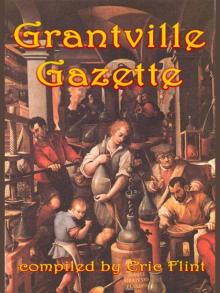 The Grantville Gazette Volumn VI
The Grantville Gazette Volumn VI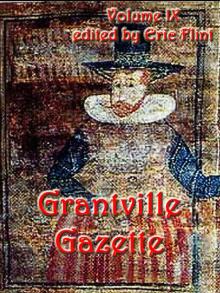 Grantville Gazette, Volume IX
Grantville Gazette, Volume IX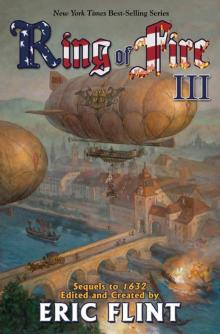 Ring of Fire III
Ring of Fire III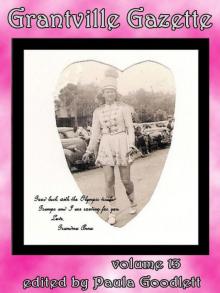 Grantville Gazette-Volume XIII
Grantville Gazette-Volume XIII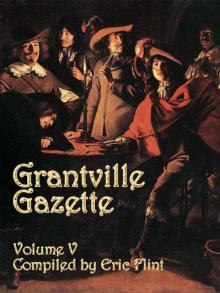 Grantville Gazette V
Grantville Gazette V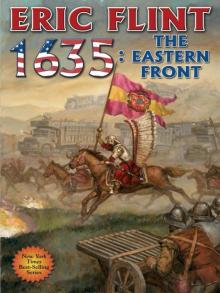 1635: The Eastern Front
1635: The Eastern Front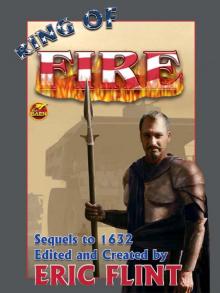 Ring of Fire
Ring of Fire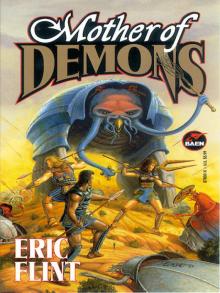 Mother of Demons
Mother of Demons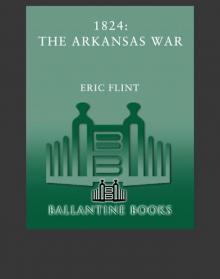 1824: The Arkansas War
1824: The Arkansas War Grantville Gazette 43
Grantville Gazette 43 Forward the Mage
Forward the Mage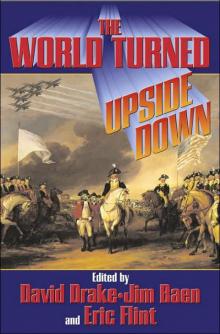 The World Turned Upside Down
The World Turned Upside Down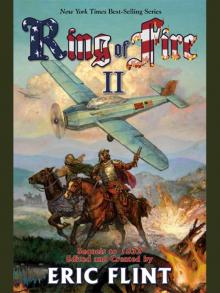 Ring of Fire II
Ring of Fire II Boundary
Boundary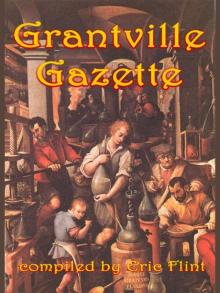 Grantville Gazette VI
Grantville Gazette VI 1812: The Rivers of War
1812: The Rivers of War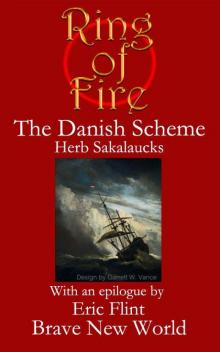 1633
1633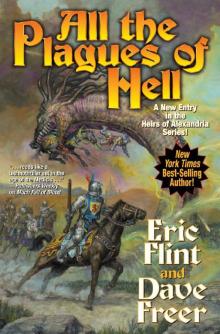 All the Plagues of Hell
All the Plagues of Hell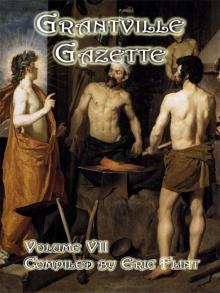 Grantville Gazette, Volume 7
Grantville Gazette, Volume 7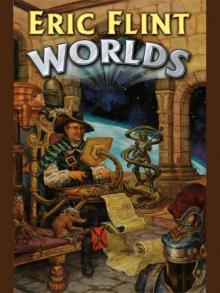 Worlds
Worlds 1632
1632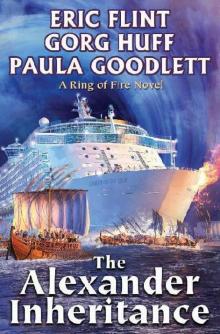 The Alexander Inheritance
The Alexander Inheritance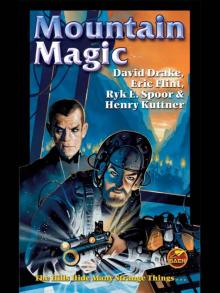 Diamonds Are Forever
Diamonds Are Forever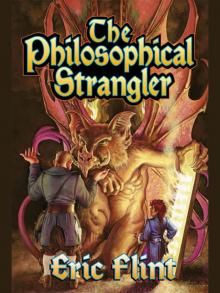 The Philosophical Strangler
The Philosophical Strangler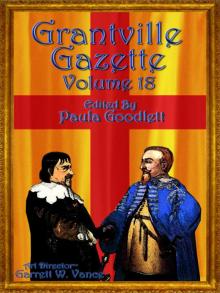 Grantville Gazette, Volume VIII
Grantville Gazette, Volume VIII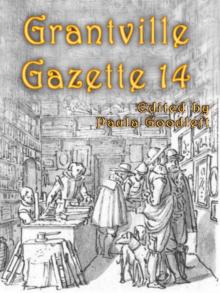 Grantville Gazette-Volume XIV
Grantville Gazette-Volume XIV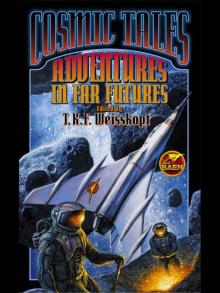 Genie Out of the Bottle
Genie Out of the Bottle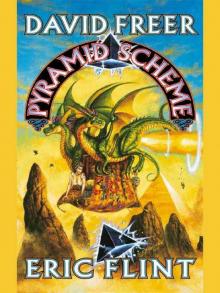 Pyramid Scheme
Pyramid Scheme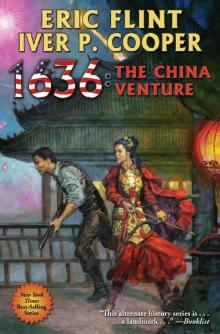 1636- the China Venture
1636- the China Venture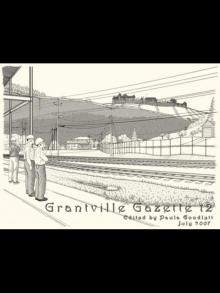 Grantville Gazette, Volume XII
Grantville Gazette, Volume XII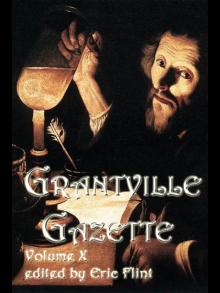 Grantville Gazette, Volume I
Grantville Gazette, Volume I The Demons of Constantinople
The Demons of Constantinople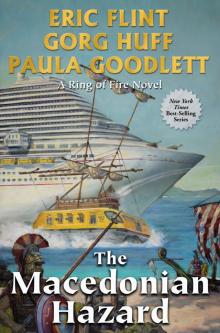 The Macedonian Hazard
The Macedonian Hazard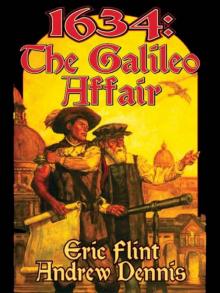 1634- the Galileo Affair
1634- the Galileo Affair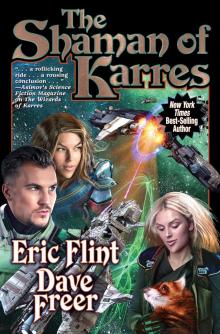 The Shaman of Karres
The Shaman of Karres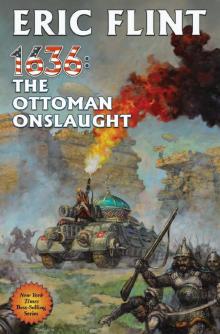 1636: The Ottoman Onslaught
1636: The Ottoman Onslaught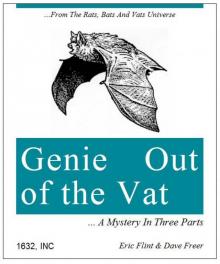 The Genie Out of the Vat
The Genie Out of the Vat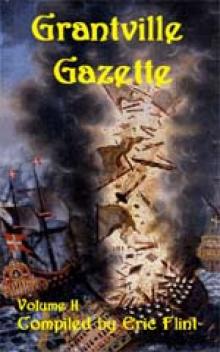 The Grantville Gazette Volumn II
The Grantville Gazette Volumn II 1636: The Saxon Uprising
1636: The Saxon Uprising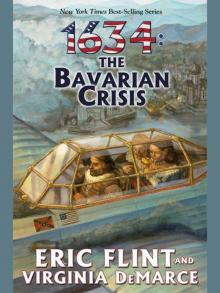 1634 The Baltic War
1634 The Baltic War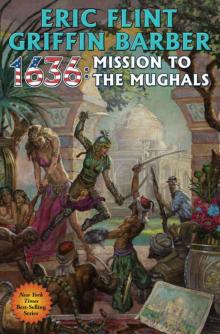 1636: Mission to the Mughals
1636: Mission to the Mughals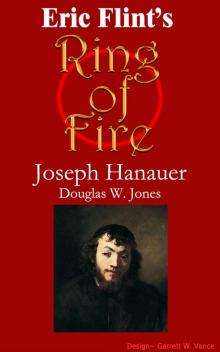 !632: Joseph Hanauer
!632: Joseph Hanauer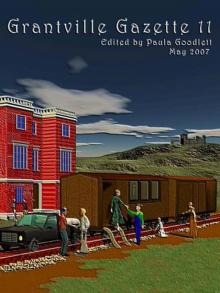 Grantville Gazette-Volume XI
Grantville Gazette-Volume XI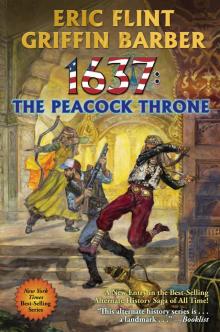 1637: The Peacock Throne
1637: The Peacock Throne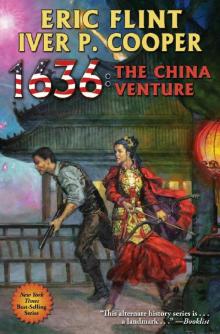 1636: The China Venture
1636: The China Venture The Rats, the Bats & the Ugly
The Rats, the Bats & the Ugly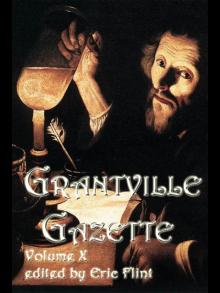 Grantville Gazette, Volume X
Grantville Gazette, Volume X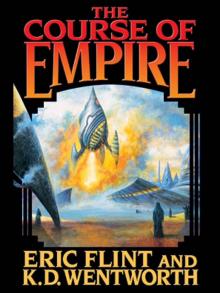 The Course of Empire
The Course of Empire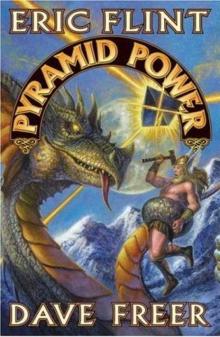 Pyramid Power
Pyramid Power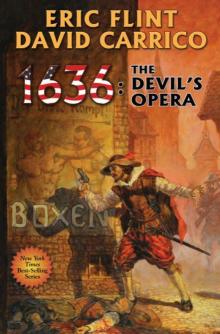 1636: The Devil's Opera
1636: The Devil's Opera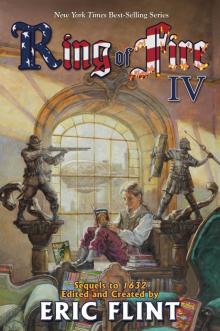 Ring of Fire IV
Ring of Fire IV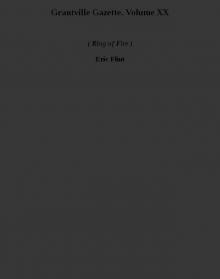 Grantville Gazette. Volume XX (ring of fire)
Grantville Gazette. Volume XX (ring of fire)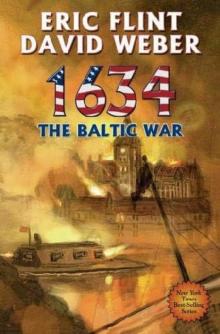 1634: The Baltic War (assiti chards)
1634: The Baltic War (assiti chards)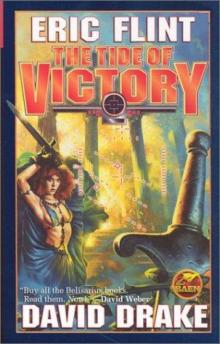 The tide of victory b-5
The tide of victory b-5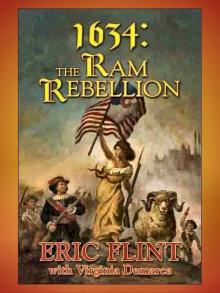 1634: The Ram Rebellion
1634: The Ram Rebellion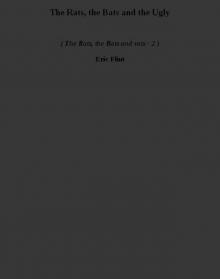 The Rats, the Bats and the Ugly trtbav-2
The Rats, the Bats and the Ugly trtbav-2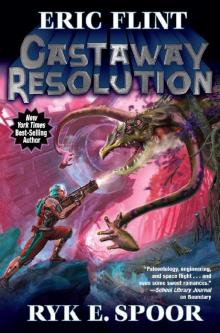 Castaway Resolution
Castaway Resolution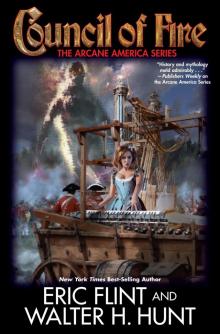 Council of Fire
Council of Fire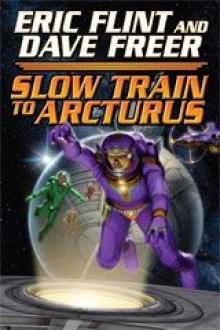 Slow Train to Arcturus
Slow Train to Arcturus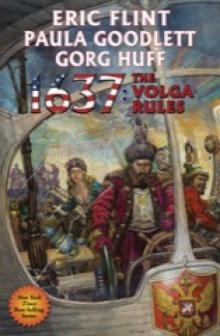 1637_The Volga Rules
1637_The Volga Rules Boundary b-1
Boundary b-1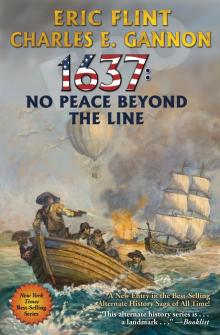 1637: No Peace Beyond the Line
1637: No Peace Beyond the Line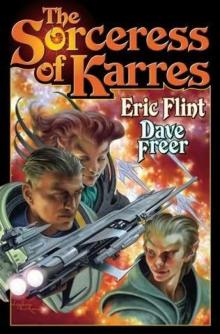 The Sorceress of Karres
The Sorceress of Karres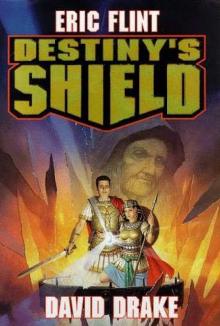 Destiny's shield b-3
Destiny's shield b-3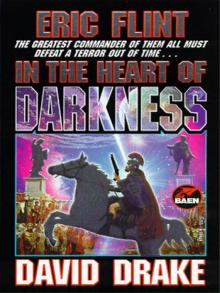 In the Heart of Darkness b-2
In the Heart of Darkness b-2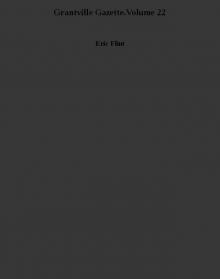 Grantville Gazette.Volume 22
Grantville Gazette.Volume 22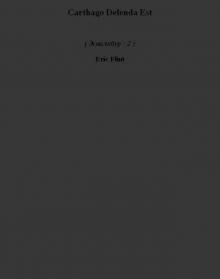 Carthago Delenda Est э-2
Carthago Delenda Est э-2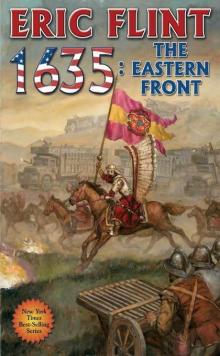 1635: The Eastern Front (assiti shards)
1635: The Eastern Front (assiti shards) 1812-The Rivers of War
1812-The Rivers of War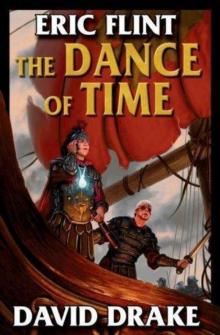 The Dance of Time b-6
The Dance of Time b-6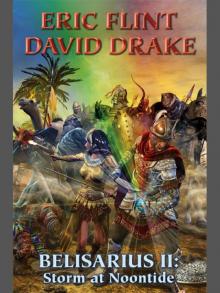 Belisarius II-Storm at Noontide
Belisarius II-Storm at Noontide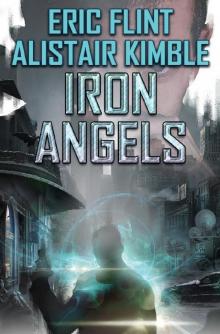 Iron Angels
Iron Angels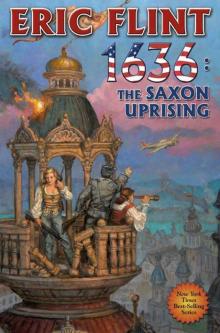 1636:The Saxon Uprising as-11
1636:The Saxon Uprising as-11 1812: The Rivers of War tog-1
1812: The Rivers of War tog-1 Jim Baens Universe-Vol 1 Num 6
Jim Baens Universe-Vol 1 Num 6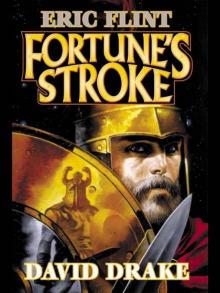 Fortune's stroke b-4
Fortune's stroke b-4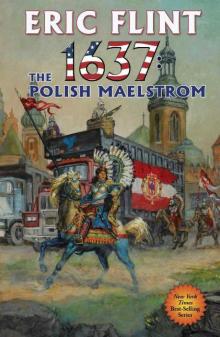 1637 The Polish Maelstrom
1637 The Polish Maelstrom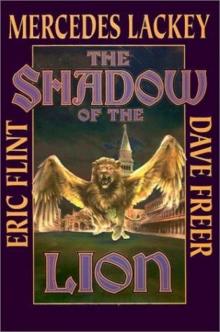 The Shadow of the Lion hoa-1
The Shadow of the Lion hoa-1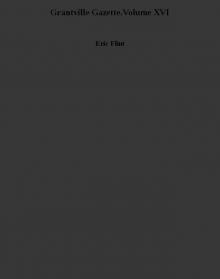 Grantville Gazette.Volume XVI
Grantville Gazette.Volume XVI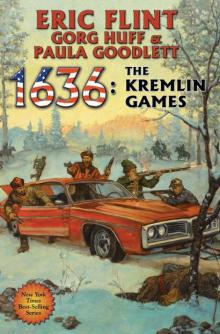 1636:The Kremlin games rof-14
1636:The Kremlin games rof-14 1824: The Arkansas War tog-2
1824: The Arkansas War tog-2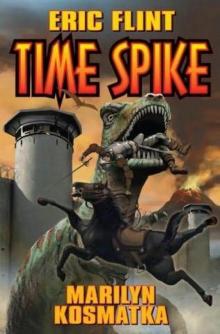 Time spike
Time spike Jim Baen's Universe-Vol 2 Num 1
Jim Baen's Universe-Vol 2 Num 1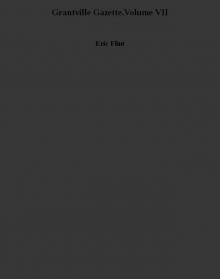 Grantville Gazette.Volume VII
Grantville Gazette.Volume VII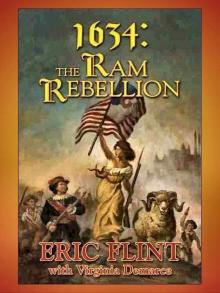 1634: The Ram Rebellion (assiti shards)
1634: The Ram Rebellion (assiti shards)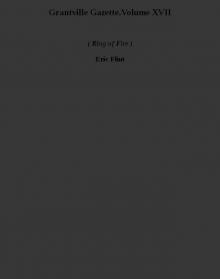 Grantville Gazette.Volume XVII (ring of fire)
Grantville Gazette.Volume XVII (ring of fire) Jim Baens Universe-Vol 2 Num 5
Jim Baens Universe-Vol 2 Num 5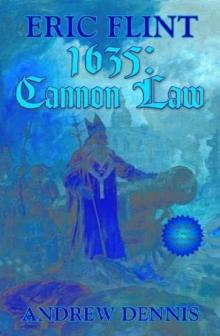 1635: The Cannon Law (assiti shards)
1635: The Cannon Law (assiti shards)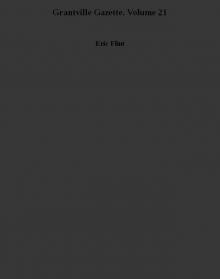 Grantville Gazette. Volume 21
Grantville Gazette. Volume 21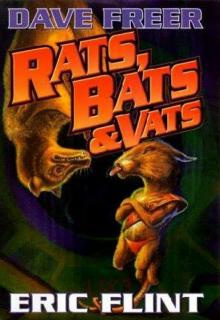 Rats, Bats and Vats rbav-1
Rats, Bats and Vats rbav-1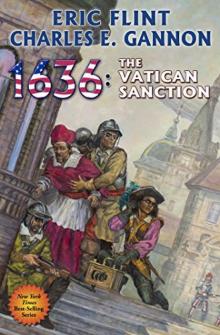 1636_The Vatican Sanction
1636_The Vatican Sanction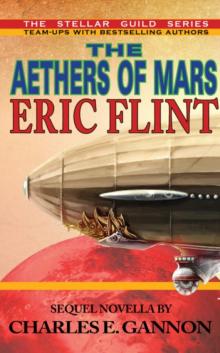 The Aethers of Mars
The Aethers of Mars Jim Baen's Universe Volume 1 Number 5
Jim Baen's Universe Volume 1 Number 5 1634: The Bavarian Crisis (assiti chards)
1634: The Bavarian Crisis (assiti chards)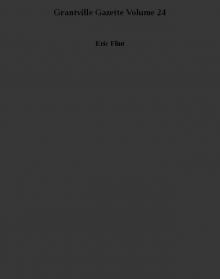 Grantville Gazette Volume 24
Grantville Gazette Volume 24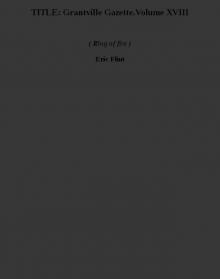 TITLE: Grantville Gazette.Volume XVIII (ring of fire)
TITLE: Grantville Gazette.Volume XVIII (ring of fire)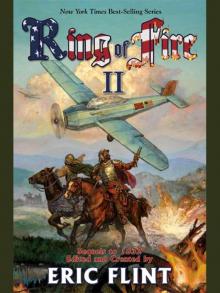 Ring of fire II (assiti shards)
Ring of fire II (assiti shards)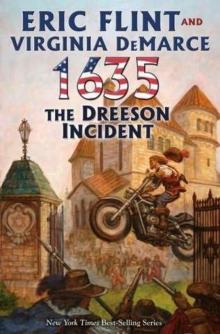 1635:The Dreeson Incident (assiti shards)
1635:The Dreeson Incident (assiti shards) Jim Baen's Universe-Vol 2 Num 4
Jim Baen's Universe-Vol 2 Num 4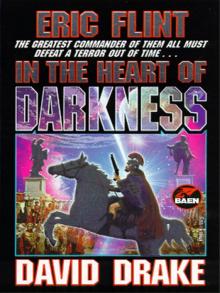 In the Heart of Darkness
In the Heart of Darkness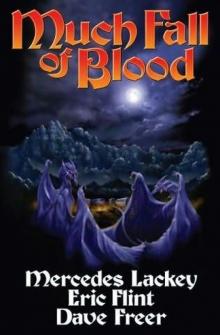 Much Fall Of Blood hoa-3
Much Fall Of Blood hoa-3